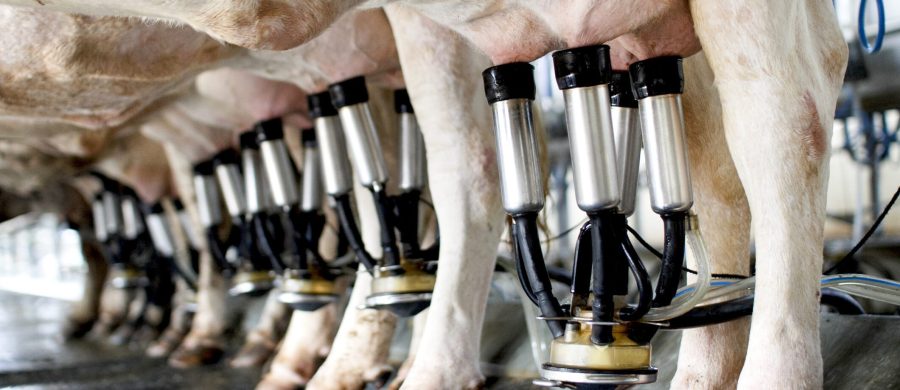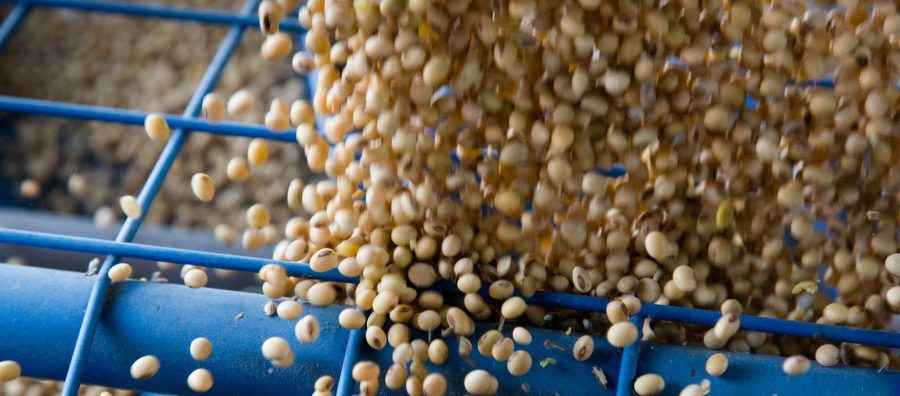Uncover the effects of once-a-day milking on milk protein quality. Could this approach boost your dairy production? Dive into the breakthrough study’s latest revelations.

Understanding the intricacies of dairy farming can profoundly affect milk quality, with milking frequency emerging as a crucial factor. A recent study by Riddet Institute PhD student Marit van der Heijden, published in the journal Dairy, illustrates how milking frequency can alter the protein composition in milk, potentially transforming dairy practices.
“Milk from a once-a-day (OAD) milking system contained higher proportions of αs2-casein and κ-casein and lower proportions of α-lactalbumin,” said Van der Zeijden.
This study compares the effects of OAD and twice-a-day (TAD) milking over an entire season, revealing significant changes in protein proportions that could affect milk processing and quality.
This research underscores the impact of milking frequency on milk protein composition. By comparing once-a-day (OAD) and twice-a-day (TAD) milking, the study reveals how these practices affect specific milk proteins. Conducted by the Riddet Institute, the study analyzed protein composition over the entire milking season, providing insights that previous short-term studies should have included. These findings highlight the relationship between milking practices and milk quality, with potential implications for dairy management and processing.
Protein Composition Shifts with Milking Frequency: Implications for Milk Quality and Processing
| Parameter | OAD Milking | TAD Milking |
|---|---|---|
| αs2-casein | Higher Proportions | Lower Proportions |
| κ-casein | Higher Proportions | Lower Proportions |
| α-lactalbumin | Lower Proportions | Higher Proportions |
| Average Milk Solids Production | Decreased by 13% | Variable |
| Milk Yield | Reduced | Higher |
The study uncovered noteworthy disparities in protein proportions contingent on the milking regimen employed. Specifically, milk derived from an OAD milking system exhibited elevated levels of α s2 casein and κ-casein, juxtaposed with a decrease in the proportion of α-lactalbumin. These findings underscore the impact that milking frequency can have on milk’s nutritional and functional properties, potentially influencing its processing characteristics and overall quality.
Van der Zeijden’s Findings: A New Paradigm for Dairy Processing and Quality Management
Van der Zeijden’s findings reveal significant effects on milk processing and quality due to changes in protein composition from different milking frequencies. OAD milking increases α s2 casein and κ-casein levels while reducing α-lactalbumin. These proteins are crucial for milk’s gelation and heating properties.
Higher κ-casein in OAD milk can enhance gel strength and stability, which is beneficial for cheese production. κ-casein is key in forming casein micelle structures, improving cheese texture and firmness.
Lower α-lactalbumin levels in OAD milk may impact milk’s heat stability. α-lactalbumin affects whey proteins, which are heat-sensitive and play a role in denaturation during pasteurization or UHT processing. Less α-lactalbumin might result in smoother consistency in heat-treated dairy products.
The protein composition differences from milking frequency require adjustments in dairy processing techniques to optimize product quality. Dairy processors must tailor their methods to harness these altered protein profiles effectively.
Methodical Precision: Ensuring Robust and Comprehensive Findings in Van der Zeijden’s Research
The methodology of Van der Zeijden’s study was meticulously crafted to ensure reliable and comprehensive findings. Two cohorts of cows at Massey University research farms in Palmerston North followed different milking regimes—OAD and TAD. Both farms used pasture-based feeding, with TAD cows receiving more dry matter supplementation.
Eighteen cows, evenly split between the two systems, were selected for homogeneity. Each group consisted of three Holstein-Friesians, three Holstein-Friessian x Jersey crosses, and three Jerseys, allowing for a direct comparison of milking frequency effects on protein composition.
Over nine strategic intervals across the milking season, Van der Zeijden collected milk samples, capturing data at the season’s start, middle, and end. Samples were also categorized by early, mid, and late lactation stages, ensuring a thorough understanding of how milking frequency impacts protein content throughout the lactation period.
Dynamic Interplay: Seasonal Timing, Lactation Stages, and Cow Breeds Shape Protein Composition in Bovine Milk
| Factor | Description | Impact on Protein Composition |
|---|---|---|
| Milking Frequency | Once-a-day (OAD) vs. Twice-a-day (TAD) milking | OAD increases proportions of α s2 casein and κ-casein, decreases α-lactalbumin |
| Seasonal Timing | Different periods within the milking season | Varies protein proportions due to changes in diet, environmental conditions |
| Lactation Stage | Periods of early, mid, and late lactation | Protein and fat content increase as milk yields decrease |
| Cow Breed | Holstein-Friesian, Jersey, and crossbreeds | Jersey cows have higher protein and milk fat content, larger casein-to-whey ratio |
| Feeding System | Pasture-based vs. supplementary feeding | Impacts overall milk yield and protein profiles |
Several factors impact protein composition in bovine milk, directly influencing milk quality and processing. Seasonal timing is critical; protein levels can shift throughout the milking season due to changes in pasture quality and cow physiology. The lactation stage also plays a vital role. Early in lactation, milk generally has higher protein and fat levels, decreasing until mid-lactation and possibly rising again as the drying-off period nears. This cyclical variation from calving to preparation for the next cycle affects milk yield and composition.
By considering seasonal timing, lactation stages, and cow breeds, dairy producers can adapt management practices to enhance protein levels in milk. This alignment with consumer demands boosts product quality. It informs breeding, feeding, and milking strategies to maximize milk’s nutritional and functional benefits.
Breed-Specific Insights: Jersey Cows Stand Out in Protein-Rich Milk Production
Van der Zeijden’s study provides detailed insights into how different breeds vary in milk protein composition, with a focus on Jersey cows. Jersey cows produce milk with higher protein and milk fat content compared to other breeds and a higher casein-to-whey ratio. This makes Jersey milk better for certain dairy products like cheese and yogurt, where more casein is helpful. These findings highlight how choosing the right breed can improve the quality and processing of dairy products.
Embracing Change: The Increasing Popularity of Once-a-Day Milking Among New Zealand Dairy Farmers
The appeal of once-a-day (OAD) milking is growing among New Zealand dairy farmers, driven by its lifestyle benefits. While most farms stick with twice-a-day (TAD) milking, more are shifting to OAD for better work-life balance. OAD milking reduces time in the cowshed, allowing more focus on other farm tasks and personal life. It also improves herd health management by providing more efficient handling routines. However, it comes with challenges like managing higher somatic cell counts and adjusting milk processing to different compositions. The move to OAD reflects a balance between efficiency and personal well-being without compromising milk quality.
The Bottom Line
Milking frequency significantly influences the protein composition of milk, impacting its quality and processing. Marit van der Zeijden’s study highlights vital differences; OAD milking leads to higher levels of certain caseins and lower α-lactalbumin, altering milk’s gelation and heating properties. These findings urge dairy producers to adapt practices based on protein needs.
The research also reveals that breed and lactation stages interact with milking frequency to affect protein content. Jersey cows show higher protein and fat ratios. As OAD milking is popular in New Zealand, these insights can guide better farm management decisions, optimizing economics and product quality. Strategic adjustments in milking practices could enhance profitability and productivity, advancing dairy processing and quality management.
Key Takeaways:
- Once-a-day milking (OAD) impacts milk protein composition, increasing α s2-casein and κ-casein while decreasing α-lactalbumin.
- Variation in protein composition influences milk’s gelation and heating properties, affecting cheese production and heat-treated dairy products.
- This study is unique as it evaluates protein changes over a complete milking season rather than relying on single samples.
- Breed-specific differences, particularly in Jersey cows, highlight the importance of genetic factors in milk protein content.
- OAD milking systems are gaining popularity due to lifestyle benefits, despite lower overall milk production compared to twice-a-day (TAD) systems.
- Further research is needed to explore the environmental impact, specifically greenhouse gas emissions, associated with OAD milking systems.












